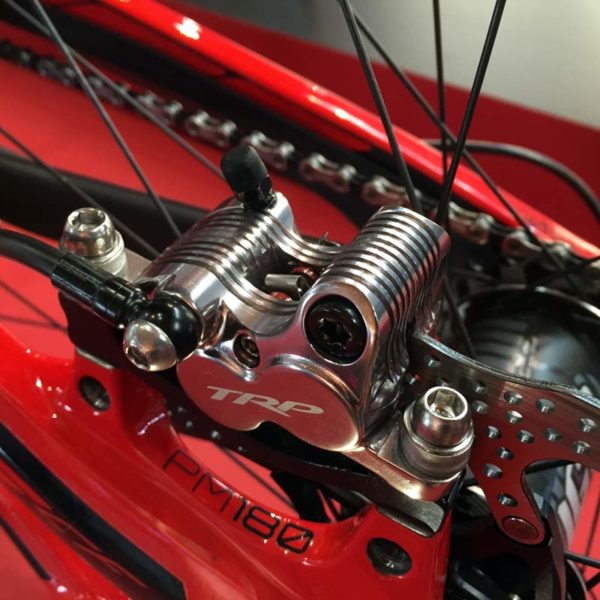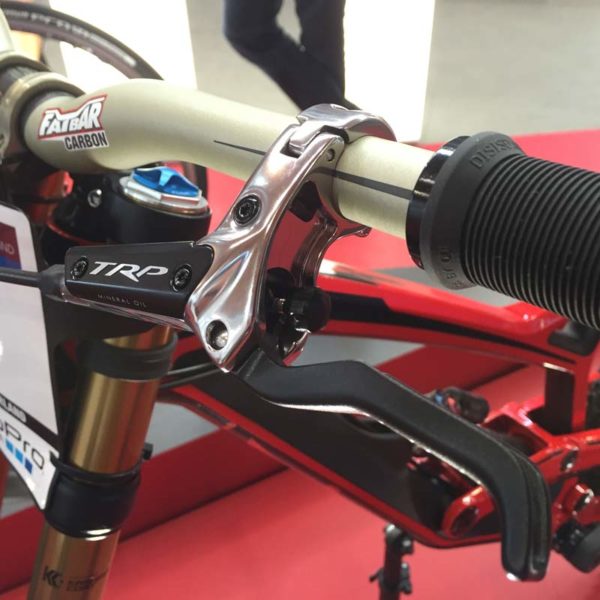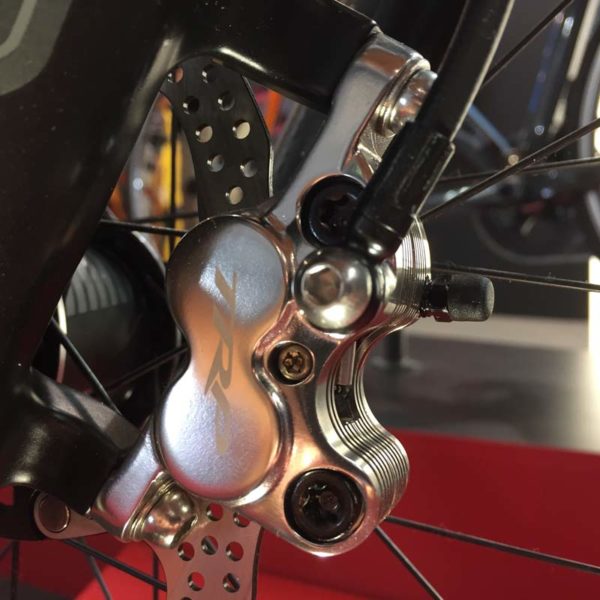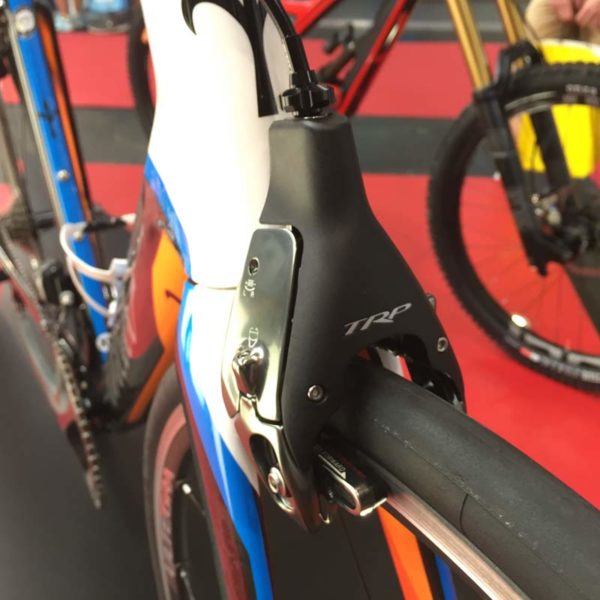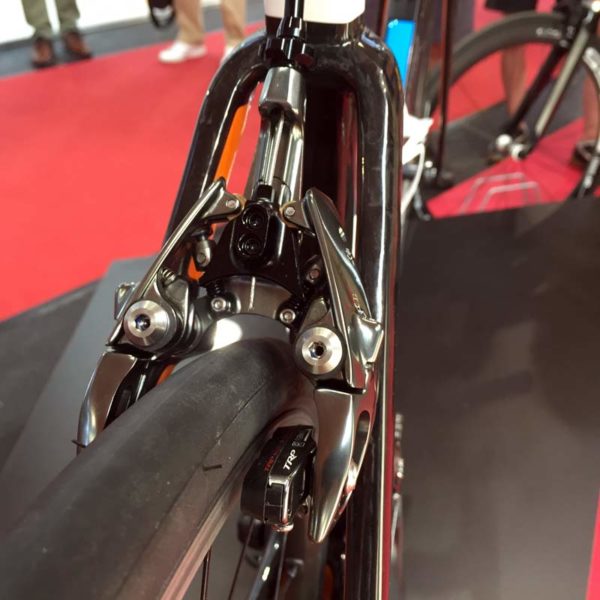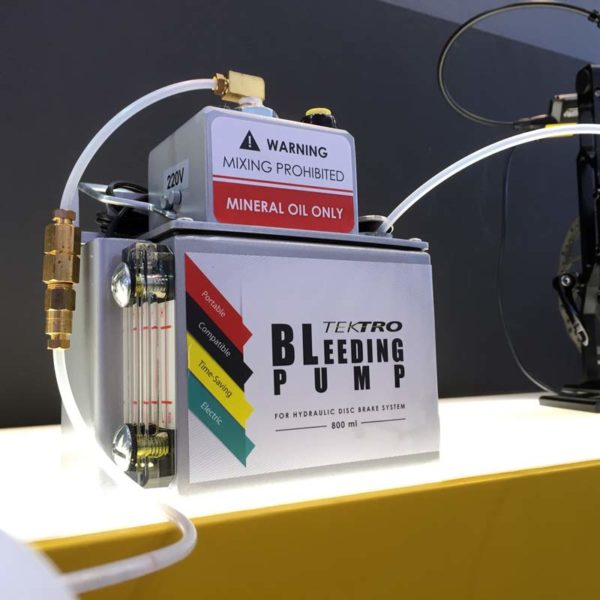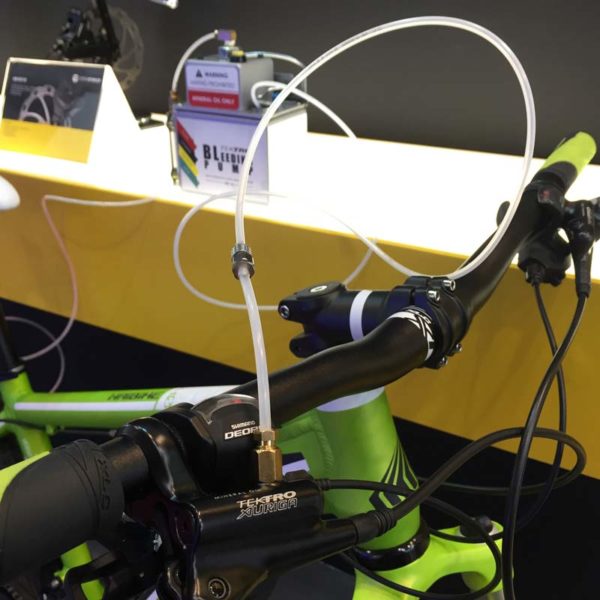TRP only started working with Aaron Gwin in February, after agreeing to his terms. They say Gwin didn’t just want a sponsor throwing cash and product at him. He wanted someone that would take his input and actually tweak things throughout the season.
They started with the levers, putting other parts from their existing inventory. From there, they printed rapid prototypes to get the shapes for Gwin to feel. Then they took the ones he liked and produced one-off lost wax sand casting metal samples, then CNC samples until it was final. Then they’d forge the levers and prep for race day…
The brakes started with TRP’s Quadiem SL, which is their most powerful brake, then added the revised levers. Gwin likes to brake with just one finger, so this one’s less bendy and has a little less flare, giving it a leaner profile. The reach adjust will have detents to provide a distinct click between adjustments since Gwin likes to double check lever position by counting the clicks.
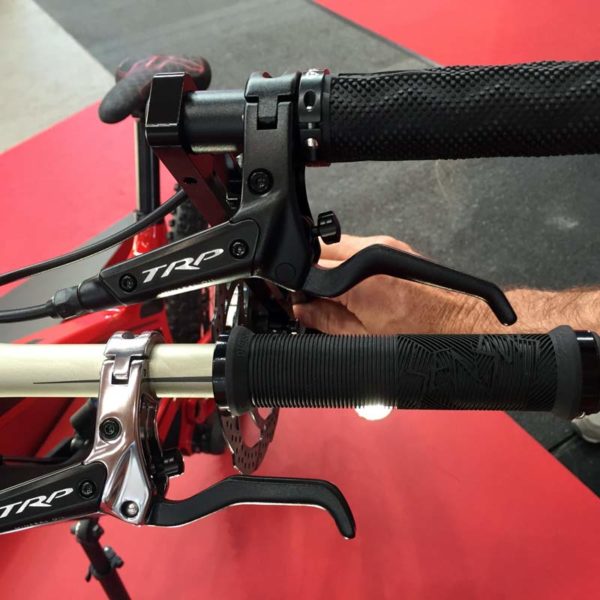
The calipers got a complete overhaul, using the same basic shape. Inside, the tolerances became much tighter to reduce pad play, preventing them from shifting forward during that initial braking. The bodies were custom CNC’d and given heat sink grooves on the top. They’re not something you can buy now, but it’s the basis for an all new brake that’s slated for 2017.
The T860 direct mount rim brakes are now in production. The roller cam design fits any bike with the two bolt Shimano direct mount pattern, but provide a sleeker, more aerodynamic package.
The aero cover is removable for service and set up. Each arm is individually adjustable, helping you get the pads evenly spaced even if your wheel is dished a little to one side.
The Tektro Bleeding Pump is a shop device originally created for the growing number of shops China (but theoretically available to anyone, with a new version being prepped for Europe) that aren’t as familiar with bleeding disc brakes.
It’s a positive pressure pump, meaning it pushes the fluid through the system starting at the caliper rather than vacuum pulling out up through the lever (which is ideal), but it gets the job done quickly and efficiently to a safe enough standard.
